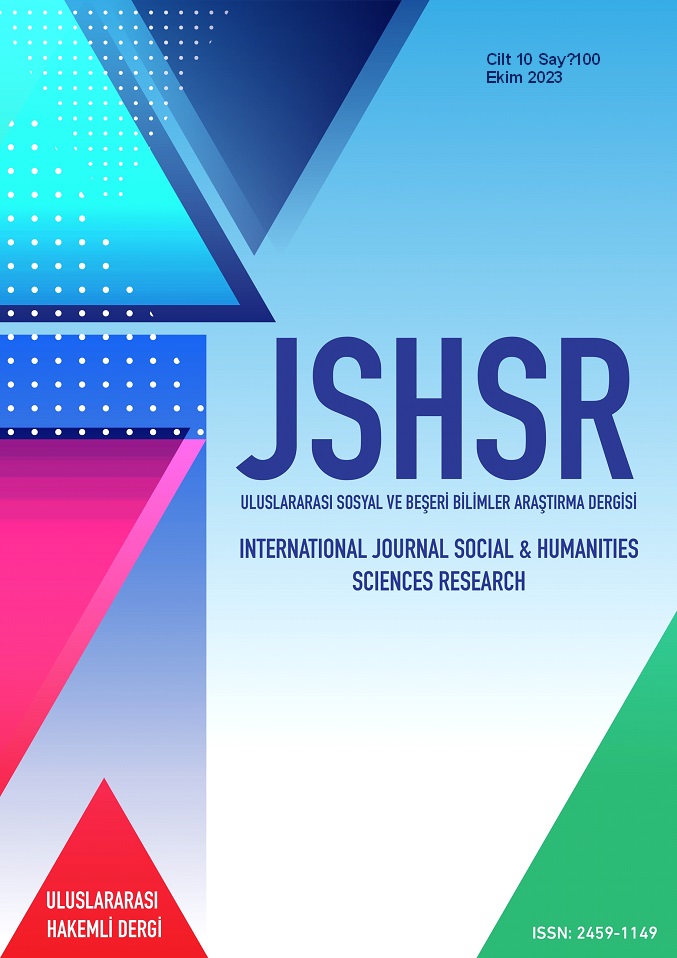Examination Of 2d Visualization Of Space Through The "Technical" Concept And Vr Experience
DOI:
https://doi.org/10.5281/zenodo.10028717Keywords:
Space, Design, Designer, Vr, OntologyAbstract
Space, which has not yet materialized, but is established in the consciousness of the designer, should be understood by its addressees as much as possible since it is an imaginary object. The presentation of the designed space is very important for the employer/trainer/user etc. because the presentation technique of the space is a guide in terms of understanding and interpretation. The abstract space, which is established, designed, and imagined in the consciousness depending on the presentation knowledge and ability of the designer, is presented to the addressees through certain techniques as a manifestation of concrete reality. In this context, the subject of the study has been determined as the differences between 2D visualization, which is one of the visualization techniques that are thought to affect the interpretation and understanding of space, and the experience of the space through virtual reality glasses (VR). However, the concept of technique will be examined through Heidegger's philosophical view first.
The research questions that constitute the reason for the existence of this study are as follows; While the spatial experience is a temporal experience, is it possible for its interlocutor to experience it through 2D visuals in a manner appropriate to its own existence, is the meaning and life of the designed space covered over 2D visuals (rendering etc.)? While the world of life, which is an operational ground where people exist, is ontologically understood and lived, can the space be understood and lived with an ontic understanding?
For the reader to compare both techniques, the 2D representation of the space designed by the writer will be modeled in the 3ds max program and visualized in the Corona render engine. The experience of the space through virtual reality will be made in the unreal engine 5.2 program of the 3d model, and the light and camera adjustments will be made and presented to the reader in a format suitable for virtual reality glasses. This study aims to be a written resource for interior design education actors and all researchers working on interior architectural visualization
References
Aktok, Ö. (2021a) Heidegger’in Tekniğe Yönelik Düşüncesinde Ontik-Ontolojik Ayrımı: Tekniğin Teknik-Olmayan Özü. FLSF (Felsefe ve Sosyal Bilimler Dergisi), Güz, 32, 205-231.
Aktok, Ö. (2021b). Meydana Getirme ve Meydan Okuma: Heidegger Felsefesinde Teknolojinin Geleneksel ve Modern Yüzleri. Beytulhikme An International of Philosophy, 11(3), 1027-1044
Aşer, K (2023) Mekan Tasarlama Eyleminin Husserl Fenomenolojisi Epokhe Kavramı Üzerinden Soyum. [Yayınlanmamış Doktora tezi], Fen Bilimleri Enstitüsü, Mimar Sinan Güzel Sanatlar Üniversitesi.
Aydınlı. S. (2002) Epistemolojik Açıdan Mekan Yorumu, Mimarlık ve Felsefe, (1. Baskı), Yem Yayınları.
Dicle, D. (2017). Heidegger’in Tekniğin Kökenine İlişkin Soruşturması. FLSF (Felsefe ve Sosyal Bilimler Dergisi), Bahar, 23, 307-328
Gray, J. G., (2008). Heidegger’in Varlık’ı. Ahmet Aydoğan (Ed.), Heidegger içinde (s.689-713). Say Yayınları.
Heidegger, M. (1997). Tekniğe Yönelik Soru. Afa Yayınları.
Heidegger, M. (1998). Tekniğe İlişkin Soruşturma. Paradigma Yayınları.
Heidegger, M., (2008). Düşünmek ne demektir. Ahmet Aydoğan (Ed.), Heidegger içinde (s.307-311), Say Yayınları.
Heidegger, M. (2021). Varlık ve Zaman. Alfa Yayınları.
Lenoir, B. (2002). Sanat Yapıtı. Yapı Kredi Yayınları
Şan, E. (2020) Felsefe Seminerleri-Ontolojik Fark. https://www.youtube.com/watch?v=FJoywnpdMt4
Ülger, E (2013). Platonun Sanat Kuramının Düşünsel Evrimi. FLSF (Felsefe ve Sosyal Bilimler Dergisi) 16, 15-28
Yavuz, H. (2006). Edebiyat ve Sanat Üzerine Yazılar. Yapı Kredi Yayınları
Downloads
Published
How to Cite
Issue
Section
License
Copyright (c) 2023 INTERNATIONAL JOURNAL OF SOCIAL HUMANITIES SCIENCES RESEARCH

This work is licensed under a Creative Commons Attribution 4.0 International License.


